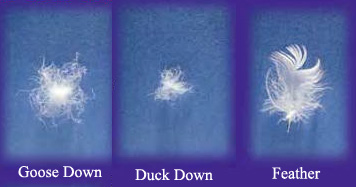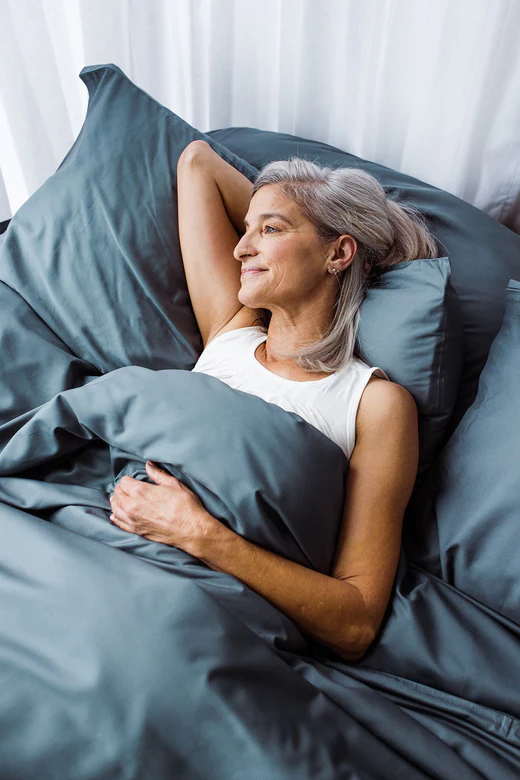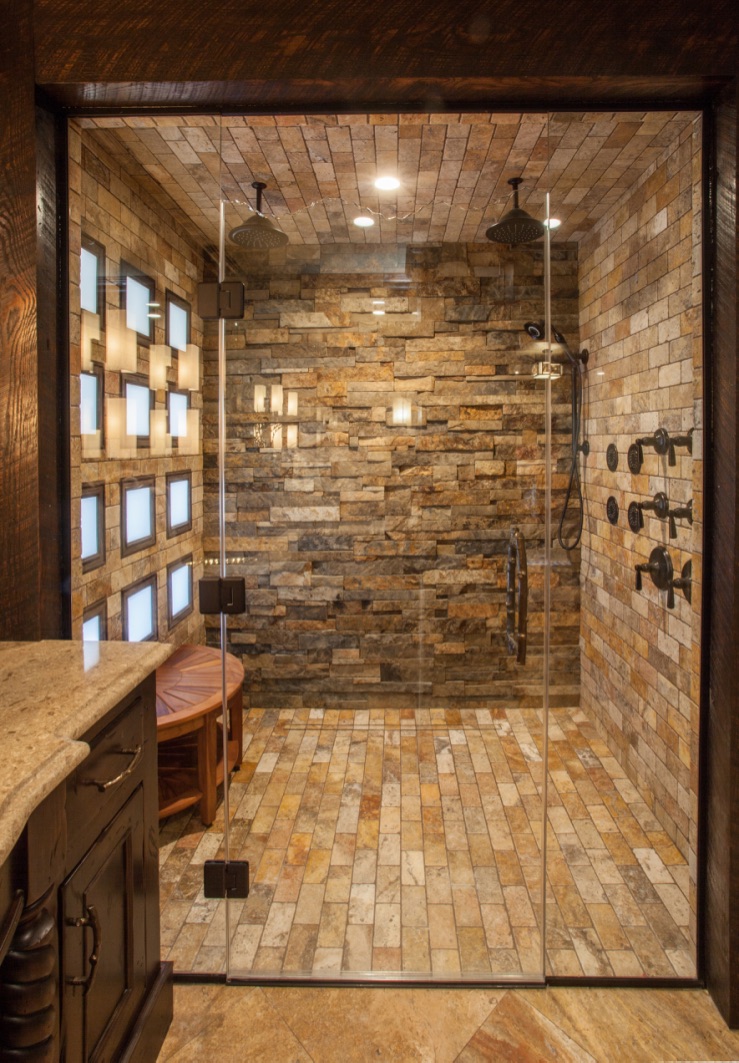If you have found yourself drawn to any of the apartments in "Only Murders in the Building", it probably says something about your personality. Check out what the design styles of Charles-Haden Savage, Oliver Putnam, or Mabel Mora says about you!
The Guide to the Well-Dressed Bed: The Foundations—Featherbeds, down comforters and oh so many pillow choices…
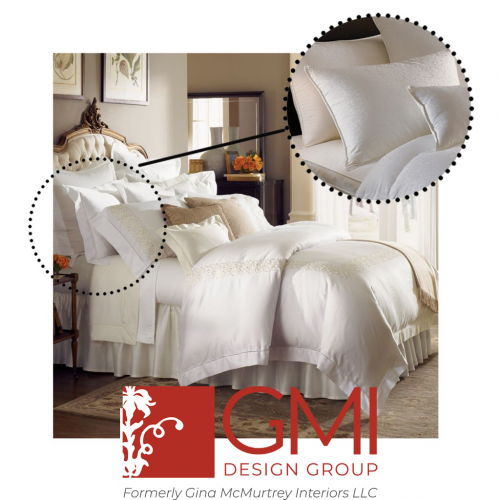
Just as any woman knows, the secret to looking and feeling amazing in a sexy new dress hinges on the undergarments she choses. The same thing applies to the bed…what you put beneath the sheets is as important as what you see.
Nothing compares to the feeling of been wrapped in a cushiony feather bed, pulling up a soft, warm down comforter, and laying your head on a billowy down pillow. Other than the mattress, these are the items that create the foundation of a true luxury bed.
If you’re in the market for down comforter, featherbed or high quality pillow, there are several aspects of these products that you should be familiar with, such as down vs. feather, fill power, how the down/feathers are cleaned, and caring for your down or feather products.
DOWN
Used for its incredible insulating properties, down is highly used in both bedding and apparel.
Down is the soft, fluffy, fine feathers at the base of a full feather. These provide insulation for the bird. Air is trapped between the fine strands and locks in body heat. The most commonly used down for bedding is goose or duck, with goose being preferred for it’s size and texture. The size and fluffiness of the down is based on where the birds originated, for example: A Siberian Goose’s down (the highest-quality down in the world) will be more plush than a European Goose’s, creating more warmth, or fill power.
FILL POWER
To put it simply, fill power is the amount of warmth you will get from a particular type of down…the higher the number, the better the insulation and loft, or plushness of the product. In addition, the higher the fill power, the lower the overall weight of the product will be. The fill power number is determined by the size of the down cluster, which is often determined by the species of down used.
Within the bedding industry, a fill power of 500 is average and 800 is excellent. Quality down comforter manufacturers will use a higher fill power down species and adjust the amount of down per square inch to determine the overall warmth.
Typically, people choose a down comforter based on their temperature preferences. There are summer-weight down comforters for people who desire the soft, plush feel of down, but tend to sleep hot and ultra plush comforters for those who live in extremely cold locations. There are even dual-fill comforters, such as the Lucerne Couple’s Comforter by ScandiaDown® that has one side at one fill power and the other at another, accommodating a hot-natured wife and cool-natured husband (or vice versa.)
FEATHERS
This is exactly what it sounds like: the whole feather—the shaft, fine filaments of feather and the cluster of down at the base. Using the whole feather gives structure to the item it is placed in, such as a pillow or featherbed.
For bedding that requires a medium or firm feel, or would need to spring back to its original shape time-after-time, feathers are a good choice.
For ages, featherbeds have been a popular choice for mattress toppers as they are a long-lasting cushion that still retains some of the warm properties of down. While not as vogue in the United States, featherbeds are still widely used in Europe.
Some disadvantages of feather products is that you may have some of the feather shafts poke through the ticking, or encasing fabric. Using a protector made of a tightly woven natural fabric will help deter these uncomfortable occurrences. Also, depending on the ticking, you may be able to see the feather or shaft through the fabric, so that may be a factor in your bed’s appearance.
CLEANING & ALLERGIES
How down and feathers are cleaned prior to construction is one of the largest differences between a low-end and high-end down product.
The allergies that people have with down products are usually caused by goose or duck dander…much like a cat or dog allergy. Quality manufacturers put their down through a rigorous, multiple wash and sterilization process that nearly eliminates these allergens.
CARE & CLEANING FOR YOUR DOWN PRODUCTS
It is not recommended that you wash your down (and that is wash, vs. dry cleaning) more than once a year, and only that if there is visible soiling. Multiple washings will deteriorate the down and give it less loft. If you do wash your down, use a very gentle or down-specific detergent.
Keeping your down in a covering, such as a duvet, feathered or pillow protector, will help reduce the effects of body oils and perspiration. The protector needs to be a tighly-woven natural fabric to allow the fill to breathe and have air movement.
To refresh your down, place outside in the sun for a few hours and fluff regularly.
PILLOWS
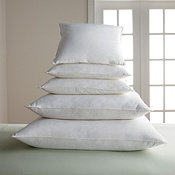
Sleeping pillows are typically all down and the amount of down used determines the firmness of the pillow. Again, it is very important that you use a pillow protector in addition to a pillowcase to protect the longevity of your down pillow. If you prefer an extra firm pillow, there are products out there that feature an encased feather core that is surrounded by down. This provides a more consistent firmness, yet gives the tactile softness of a down pillow.
Decorative pillows can be all feather, all down, or a combination of the two. You will find a ratio of down/feather on the tag. I tend to use either a 50/50 pillow form for sofa toss pillows or 30/70 (30% down/70% feather) for Euro pillows and pillows that are purely decorative. I find that they keep their shape best, but are pliable enough to create that plush look desired on a luxury bed.
DOWN ALTERNATIVES
Yes, there are alternative products for those who want the look of down, yet are most concerned about allergens (especially for lower-end manufacturers) or working within a tight budget. Made of synthetic fibers, these end up not being as plush or full as a real down product and do not distribute heat as evenly as the natural counterparts.
•
I hope this has given you a good overview of what to look for when making your down comforter or featherbed purchase. Next, we will look at the vast world of sheeting and how not all 500-thread-count sheet sets are the same.
Need help designing your dream bedroom?
Contact us today to schedule an in-home consultation!
•
THE GUIDE TO THE WELL-DRESSED BED: The basics of a well-dressed bed
•
THE GUIDE TO THE WELL-DRESSED BED: Sheeting basics—Sateen, percale, cotton and alternative fibers
•

